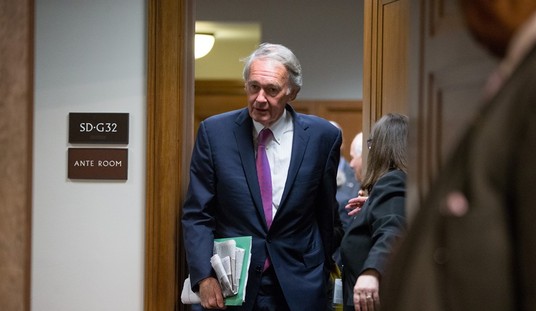We’re living in truly extraordinary times — and no, I’m not talking about Netflix’s Tiger King documentary. I’m referring to the unprecedented actions taken by the Federal Reserve and national government to deal with the severe economic consequences of policymakers’ decision to shut down much of the U.S. economy to keep people safe from coronavirus.
Over the past several weeks, the Fed has started to implement its plan to “print” trillions of dollars to bolster credit markets, and Congress and the Trump administration recently signed into law a gargantuan $2 trillion stimulus package.
Even more incredibly, President Trump is now calling for a second $2 trillion stimulus plan, this time focused on overhauling U.S. infrastructure.
Regardless of whether these plans will be effective at reducing the devastating economic destruction caused by coronavirus, one thing is clear: these actions are creating a massive economic bubble that will inevitably have serious, long-term negative consequences for the U.S. economy, although it’s unlikely many people will realize it when those consequences finally do take form.
Over the past two decades, the United States has experienced two significant recessions that resulted in the Fed and national government utilizing strategies similar to those they are now employing: reducing interest rates to zero or near-zero, carrying out extensive money-printing operations, and expanding government deficits.
In both cases, as a direct result of these actions, large “bubbles” formed throughout the economy, annual GDP growth stayed well below historic norms for economic recoveries, household debt dramatically increased and household savings decreased—setting the stage for future economic problems.
Recommended
The biggest bubble created by the Fed’s actions occurred in the housing sector. From 1988 to 1998, prior to the Fed’s radical actions, housing sales prices increased by $43,600, about $4,300 per year. But from 1999 to 2007, spurred by interest-rate cuts from the Fed and a variety of government regulations encouraging less-stringent lending practices, housing sales prices increased by $133,000, more than $16,000 per year. (The Fed’s low-interest rates encouraged people to borrow because obtaining loans is easier and cheaper and there are very few incentives to save.)
The housing and financial markets then crashed in 2007 and 2008, in large part because of the Fed’s actions in the years prior, sending the global economy into a major recession. The Fed responded by once again cutting interest rates to effectively zero, and it kept them historically low through all of President Obama’s time in office. Under Trump, rates increased, but only slightly.
As a result of these activities, housing prices—prior to the coronavirus outbreak—once again increased dramatically. From 2011 to 2019, prices skyrocketed by $122,000, making it more expensive than ever for people to purchase a home and causing housing debt to reach new heights.
Other forms of household debt also increased as a result of the Fed’s policies. The Federal Reserve reported that even prior to the coronavirus, total debt for auto loans, credit cards and student loans reached all-time highs. Americans were also saving significantly less than they were in the decades prior to 2000.
With housing prices, college tuition rates, and household debt increasing by leaps and bounds, why didn’t the Fed increase interest rates, slowing inflation in important markets and encouraging savings?
The two biggest reasons for the Fed’s irresponsible actions are that (1) most people on Wall Street and in Washington, D.C., including President Trump, didn’t want rates to rise because they believe that lower rates create economic growth by making it easier for businesses and individuals to get loans, and (2) keeping interest rates low is important for helping the federal government manage its growing debt load.
The federal government has been running up reckless amounts of debt for 20 years. Under President Obama, about as much money was added to the national debt as under every other president combined. Since 2017, Democrats and Republicans in Congress, as well as President Trump, have continued to contribute to the problem, and deficits have increased as a result. America was on track to have a $1 trillion deficit in 2020 before anyone ever heard of COVID-19.
The more debt the national government amasses, the more money it must pay every year in interest payments. If interest rates are allowed to increase, it means the federal government would have to pay significantly more to continue financing its spending addiction, so the Fed has in recent years continued to keep rates low in part to ensure Congress has the power to spend as much money as it wants—even if that means spending hundreds of billions or even trillions more than it brings in.
As the federal government has continued to increase its spending—exerting ever more control and influence over the U.S. economy—and as the Fed has continued to keep interest rates low— incentivizing people to make poor economic decisions and driving tens of millions of Americans into debt—long-term economic growth has declined.
Annual GDP growth hasn’t topped three percent since 2005. This is astounding considering that in the 1990s, annual GDP growth was higher than three percent six times, and on four of those occasions, it exceeded four percent. From 2000 to 2005, it surpassed the three percent mark three times.
The federal government and the Federal Reserve are now taking actions that will make all these problems—a long-term shrinking of GDP growth, higher levels of household debt, etc.—much, much worse over the next two decades. Congress is spending trillions of dollars the federal government doesn’t have, and the Fed is printing trillions of additional dollars and keeping interest rates at effectively zero, setting us up for years of economic stagnation.
This doesn’t necessarily mean Trump, Congress and the Fed shouldn’t have taken some of the actions they have, but continuing to exacerbate our national debt crisis—along with all of its effects—without also passing a clear plan to fix that problem in the long term is extremely dangerous.
We better turn the ship around now, before it’s too late.

























Join the conversation as a VIP Member